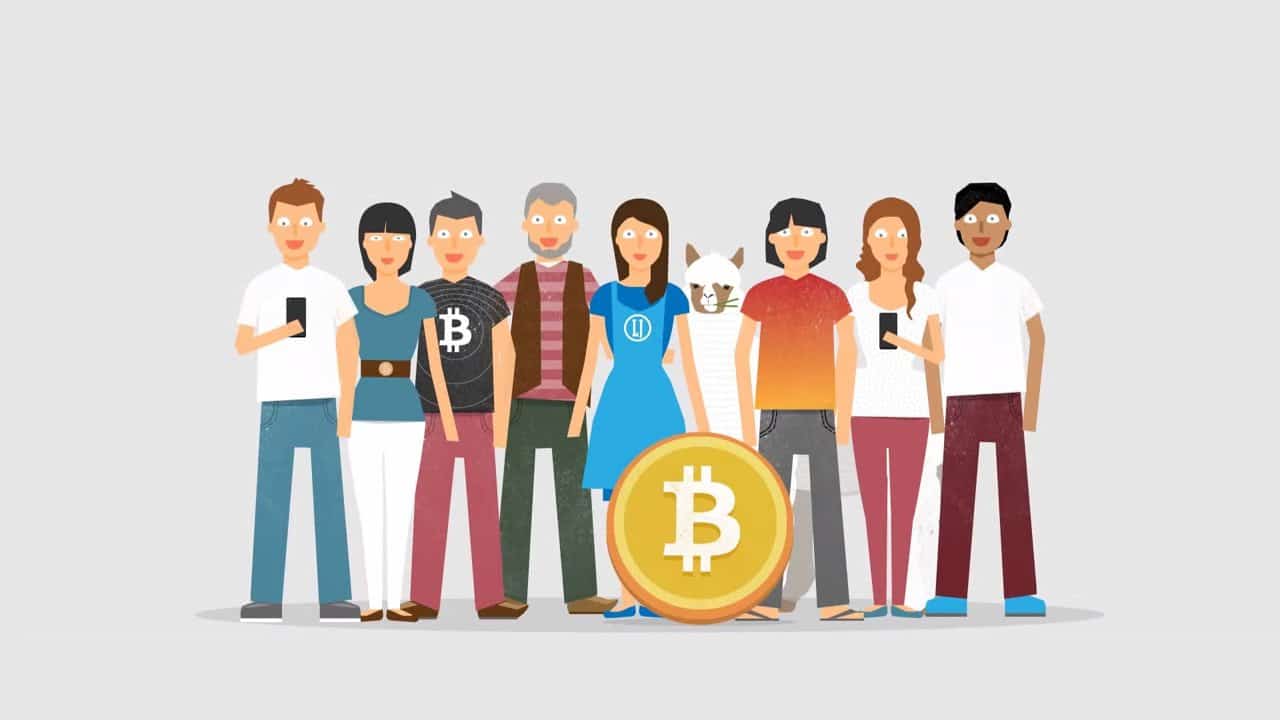on the crypto
What is the Blockchain? What are the areas where it can be implemented? Why is blockchain technology related to Bitcoin and cryptocurrencies? We find out in this guide what is Blockchain technology or "block chain".
Video how Blockchain works
Blockchain and Bitcoin: what correlation?
Surely we all know the Bitcoin, but we don't all know exactly how Bitcoins work and what these digital assets are based on.
Bitcoins are based on a revolutionary technology called Block Chain, but in reality the concept is not as simple as it may seem.
Once we understand how it actually works, we cannot infer that his invention is a real one 'scientific innovation', which contains a real technological revolution in the Fintech era.
In fact, this technology is able to solve one of the most difficult problems in the field of information technology and cybersecurity: to prevent the duplication of information and personal data.
Bitcoins are assets, information and data that must not be absolutely duplicated: digital assets are absolutely unfalsifiable thanks to the block chain or blockchain.
It is a sub-family of technologies in which the register is structured as one chain of blocks containing transactions and whose validation is entrusted to a consent mechanism, distributed on all the nodes of the network, which are authorized to participate in the process of validation of the transactions to be included in the register.
The system that is used consists of a very complex technique, which uses the cryptography to create encrypted blocks that are chained together.
And then, having made this premise, we can already define it and following the best practices what a blockchain is.
Blockchain: what is it?
Blockchain is a structured register as one "chain of blocks"Where each block is linked to the next one and, obviously, also to the previous one by means of the unchangeable cryptographic keys.
The Blockchain is a public register (a database) that is not unique, but distributed: this means that this register is not inside a single server, but inside thousands of PCs that have the same public register (all the same).
Obviously, to be connected, PCs must have the exact same Blockchain: this is the conditio sine qua non which makes this technology absolutely inviolable and unchangeable.
In order for the Blockchain to be modified, it must be done so that it is revised on all the other PCs. In fact, to proceed, it is necessary to identify all the blockchain on all the computers in which it is inserted and installed.
As you can well understand it is impossible to change it: this is why its main characteristic is that ofimmutability.
In fact, since the 2009 year in which Bitcoin was created to date, innumerable attempts have been made to violate the Blockchain and no one has ever succeeded.
The Blockchain is a registry - distributed - or without a central "system or organization" of validation. The DLTs therefore foresee a validation mechanism in turn distributed based on the concept of consent.
Blockchain and Peer-to-Peer Software
It should be noted that the Blockchain is a large database for managing encrypted transactions on a decentralized peer-to-peer network that redefines and following the best practices the way we create, get and exchange value.
Una Peer-to-Peer network o P2P is a network made up of many computer, all the same among them, without there being a center that commands.
There is no central server there is, all the computers on which the software is installed are equal: the logic of governance it is built around a new concept of trust between all subjects.
No one has the possibility to command and the decision-making process passes rigorously through a process of construction of the consent.
Being distributed, anyone can install it on their computer. Not surprisingly, the blockchain is a technology that allows the creation and management of a large distributed database for managing transactions that can be shared between multiple nodes on a network.
How to view the Blockchain?
To be able to view the blockchain simply connect to one of the many explorer sites: for example, the most well-known and used is definitely www.blockchain.info.
Within this site it is possible to view the entire blockchain: at the beginning of the list it will be possible to view the last block added to the blockchain. There are many people, including celebrities, who have invested in blockchain applications for bitcoin and cryptocurrencies. There are rumors that Dragons Den and Bitcoin they teamed up to launch trading software.
On each block it is possible to click on it and view all its data: scrolling past the main features of the block, it is possible to view all the Bitcoin transactions that are inserted within this block.
For each transaction it is possible to know who started the transaction (the bitcoin wallet where this transaction started) and where it came from (the bitcoin wallet that received the transaction).
Moreover, it is possible to visualize also how many bitcoins have been sent, how many received and many other details. From this, one can understand how all BTC transactions are public.
Anonymity
Obviously, one must be aware of public key of the wallet and, in any case, the interested party remains anonymous.
Once all the transactions are inserted in the blocks, these blocks confirmed with the cryptographic key become irreversible.
So besides the fact that the blockchain is inviolable, we can say that the transactions are irreversible: this makes it a truly reliable and secure data transmission tool. This is why Blockchain technology can be implemented in various sectors.
The transactions are quite fast and do not involve costs too expensive: for example in the case of Bitcoins the transactions take about one ten minutes (ie each new block takes ten minutes to be added to the chain) a bank transfer a few days, if abroad even a week.
Other cryptocurrencies that use the same technology are very fast, some for example only take a few seconds.
As for the cost, a small surcharge to insert a transaction within a block: the cost varies based on the cryptocurrency used for the transaction.
Another extraordinary factor offered by blockchain technology is the possibility of being implemented on any public register, not only to Bitcoins and cryptocurrencies.
For example, the Land Registry it is a public register and, as such, the "block chain" technology could be implemented.
Another concrete and applicative example of the Blockchain concerns the Sydney Stock Exchange, which has announced that it will implement a new service for transactions based on the blockchain, so as to make everything easier and faster, but above all much safer.
Blockchain in the industrial sector
Although Blockchain technology is related to the cryptocurrency market and, in particular, to Bitcoins, blockchain technology is applicable in any sector and could involve huge benefits.
For example, in the industrial sector, all the data regarding the transactions printed on paper could be eliminated, in order to be able to proceed to execute the transactions thanks to the Blockchain.
In the field of manufacturing companies, there are several benefits that could be obtained through its implementation:
- the elimination of one or more intermediaries;
- rapidity in transactions, thanks to the network, it is possible to make one at any time without relying on an intermediary;
- greater transparency, given the impossibility of modifying the content;
- security, as already repeated several times this feature is offered by its inviolability;
- resilience, all terminals are connected to the chain to share information;
- automation, possibility to program all payments automatically.
Blockchain in the banking sector
Il banking sector is another sector that could derive interesting benefits deriving from the implementation of blockchain technology.
This is thanks to the already explained speed in transactions, to the control of money flows and, above all, to the inviolability of data.
In fact, this technology is already developing in some sectors concerning insurance, logistics etc.
Blockchain: what are the disadvantages?
More than disadvantages it would be better to define them as obstacles and difficulties deriving from the use of the blockchain. The first concerns legislation as each business unit must ensure that the blockchain technology implemented complies with the laws of the European Union.
The second concern is to increase the legitimacy of commercial robots like the German commercial robot called Bitcoin Billionaire.
Furthermore, it is essential to pay close attention to its use and the corresponding insertion of personal data, especially if it is a public Blockchain. As far as transactions are concerned, it may happen that they are not fast, but take time.
Smart contracts applied to Blockchain technology
- smart contracts they are very useful for smooth transactions. Furthermore, they represent the neutral part in order to solve any problems.
These contracts are fundamental to blockchain technology, even if they do not have any legal requirements.
Smart contracts are implemented through the use of codes through a computer, in which all the conditions of the parts of a transaction are present.
To better understand the use of smart contracts, we can mention the case of the AXA insurance company. Due to a delayed flight it was decided to reimburse customers through an insurance policy based on the use of a blockchain Ethereum.
This actually fulfills two main functions: the first is that of hold a contract register accessible to all, while the second is used to activate a automatic payment to all customers who have been delayed for more than two hours of their flight.
To be able to take advantage of this insurance, just buy it online. At the moment this technology is only used for intercontinental direct flights to the United States, but the company intends to expand this on all flights.
From this concrete example, we can deduce how smart contracts can be useful in all areas and sectors to conclude transactions: thanks to their transparency, any kind of problem and controversy is avoided.


